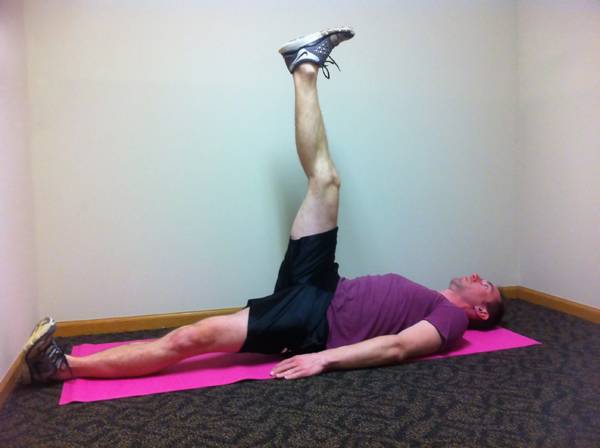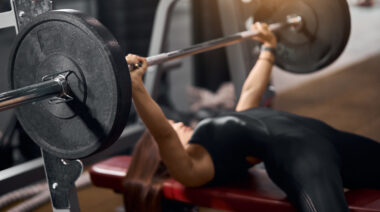Let’s call a spade a spade – you’re a mess. Years of hard training have taken their toll on you. Joints hurt, some parts don’t move like they should, maybe you’ve had surgery and while the pain is gone it “just isn’t the same as it used to be.” Training information is largely all the same – do more/lift more/work harder. Where’s the bit that says, “Don’t you just want to move better?”
The body is the most amazing piece of hardware on the planet. Treated right, it can out last any other animal and stun us with amazing feats of athleticism. If we think of our body as a racecar it may help. The very best racecars don’t spend much time on the track. Instead they spend a lot of time in the garage. There, technicians check the tires to make sure they’re on properly and the heat and pressure in them is optimal. They make sure the brakes work and can handle the forces required to slow down at top speed. They make sure the chassis is lined up and that all the other important parts of the car are working perfectly. Then the drivers go out and see how fast it can go. The moment it comes back from the hot laps it goes through the process all over again – check and assess, check and assess.
When was the last time you honestly treated your body like the racecar you want it to be? If you’re like most people, chances are the closest you come to any form of assessment pre-training is to do some light sets of your first exercise. But there’s a better way.
Gray Cook says that while you may not need all your range of motion to perform a given exercise it is still beneficial. In this example here he talks about how a freely moving ankle allows the receptors to work better. In other words – mobility has a performance boost.
Interestingly I first heard about how important mobility/flexibility was to performance over a decade ago from Ian King who says this, “After flexibility, I believe that strength (again, generally speaking) is the second most important physical quality, based on its ability to impact all other physical qualities. In addition, it’s potential on injury prevention is again second only to flexibility. However, in sharp contrast to flexibility, strength training may now be over-applied to sport.”
The problem for many people is that they’ve become fearful of stretching based off studies that show it leads to decreased force output. I have to say that after years of watching elite lifters train – and stretch prior to training – I don’t believe those studies reflect what occurs in the real world. But for those who are still fearful, here is how to make it work based off some prime FMS examples.
The two things you usually end up fixing first on people are their active straight leg raise (a test of active hamstring flexibility on one leg and active hip extension on the other) and shoulder mobility (testing abduction, internal and external rotation, as well as flexion and extension).
Active Straight Leg Raise
 The first part of the FMS model says to do some soft tissue work. Let’s start at the leg raise. For this we would do some stick work on the hamstring, ITB, hip flexor, and calf. The next step would be to do some of that evil passive stretching. Something as simple as a band assisted single leg raise fits here. And this is where people stop despite the fact they’re only half done. If you’ve just done a passive drill (which switches the body off) then we need to do an active drill to wake it back up again. So we can do an active leg raise with some core assistance to get everything back online again.
The first part of the FMS model says to do some soft tissue work. Let’s start at the leg raise. For this we would do some stick work on the hamstring, ITB, hip flexor, and calf. The next step would be to do some of that evil passive stretching. Something as simple as a band assisted single leg raise fits here. And this is where people stop despite the fact they’re only half done. If you’ve just done a passive drill (which switches the body off) then we need to do an active drill to wake it back up again. So we can do an active leg raise with some core assistance to get everything back online again.
If we really want to cement that new range in place we need load. That’s the thing most people don’t realize – load makes permanent. If you have limited range and you load it up all you’re doing is permanently sealing in place your limited range. But, the opposite is true – if you gain some movement through stretching and mobility work but don’t do a loaded movement afterwards your body won’t save this new range. Think of load as the ‘save document’ function.
If we’ve done passive flexibility and then active work, then we need a movement that will follow on from that. The best choice, if looking at our leg raise, is the single leg deadlift. There are many versions but the best choice in this case is the contralateral version – holding the load in the opposing hand.
Shoulder Mobility
If we want to look at shoulder nobility we start the same way – with soft tissue work. We’d hit the upper traps, teres, lat, and even intercostals and serratus for this. Then we’d do a mobility drill such as rib pulls to develop range. Once that was done it would be time to add load. For this, the get up is an ideal drill, although windmills would work here, too.
When guys like Cook, McGill, and King are all saying that mobility work is the key to performance increases you should sit up and take notice. But for many there’s just so much information that they don’t know where or how to start. The process:
- Soft tissue work with either a roller or the stick.
- Passive stretch.
- Active stretch/mobility.
- Add load.
The last thing to remember is that if you’ve spent twenty years hunched over a desk, you’re not going to remove all that restriction with just a few sets a week. It’s going to take daily effort over an extended period to make any real and lasting difference. The key, like with all physical things, is that you need constant and diligent practice of it to make great progress.
My best recommendation here, from FMS guru Behnad Honarbakhsh, is to get after your issues first thing (and stretching expert Thomas Kurz says that addressing flexibility first thing in the morning has greater effect than later in the day) and then repeating before you go to bed at night. Do this daily and you’ll see improvements quickly. Then, when it comes time to add speed or load your body will handle it far better than before.
Racecar photo courtesy of Shutterstock.
Active straight leg raise photo provided by Dr. Linsay Way.






